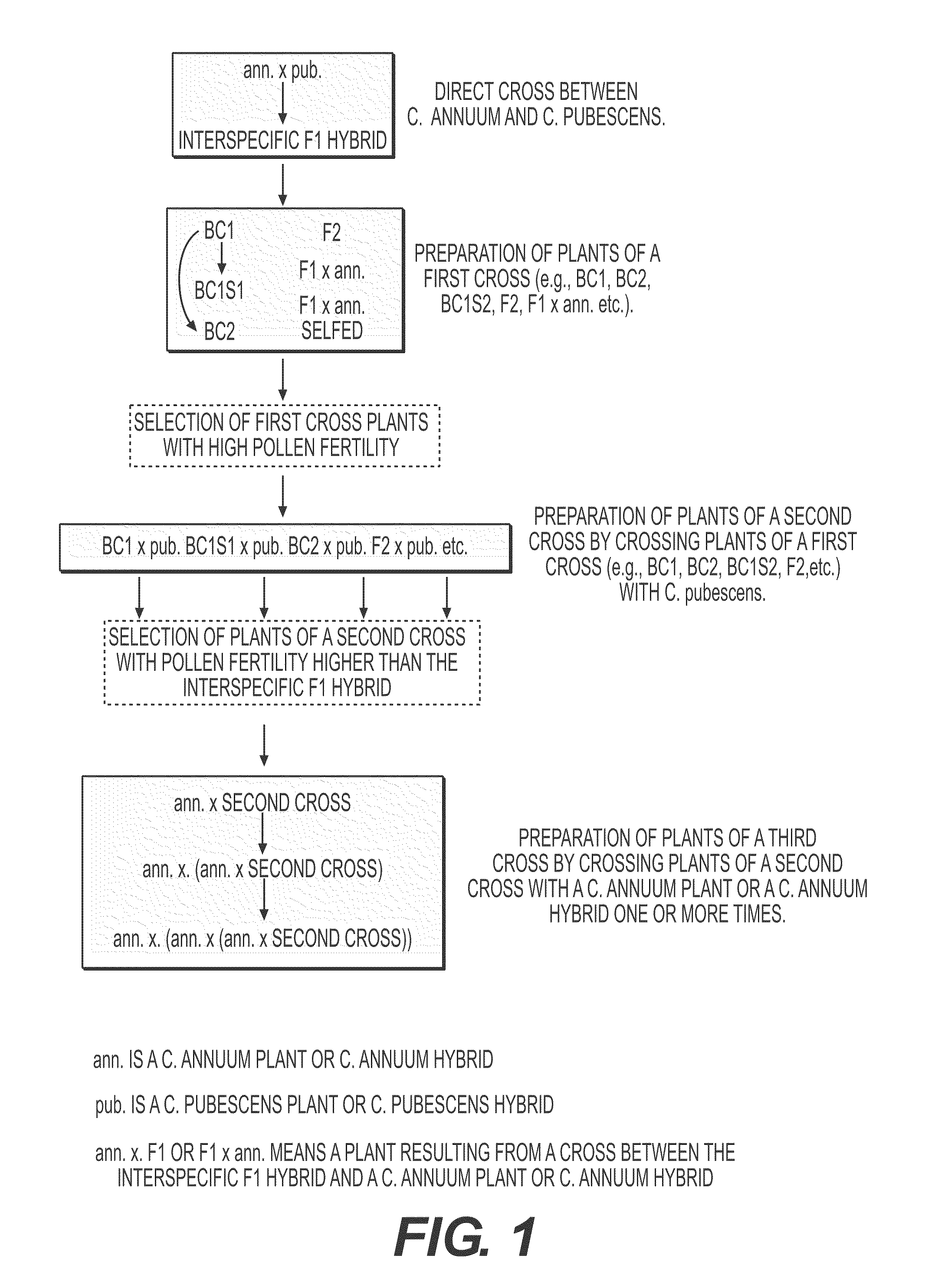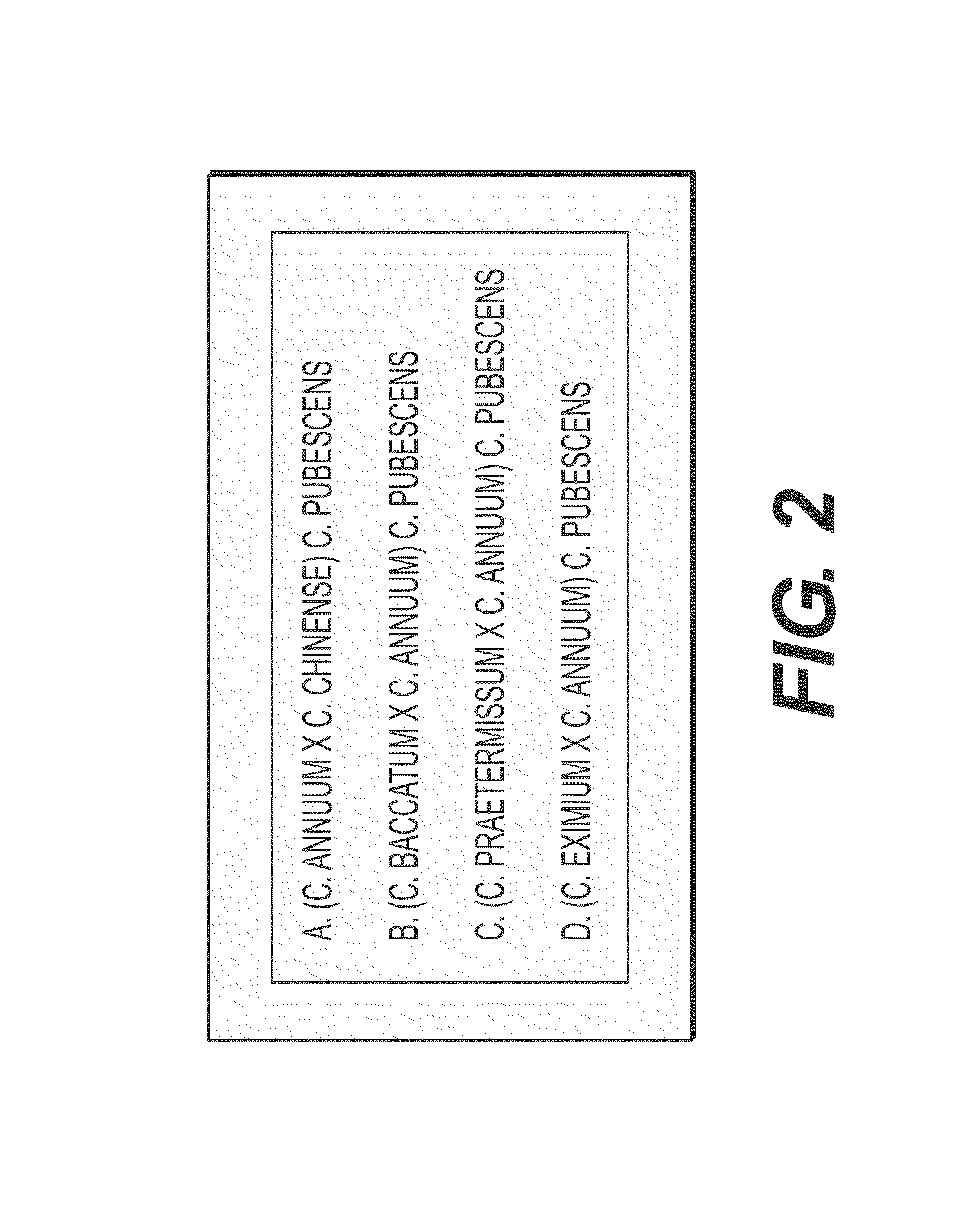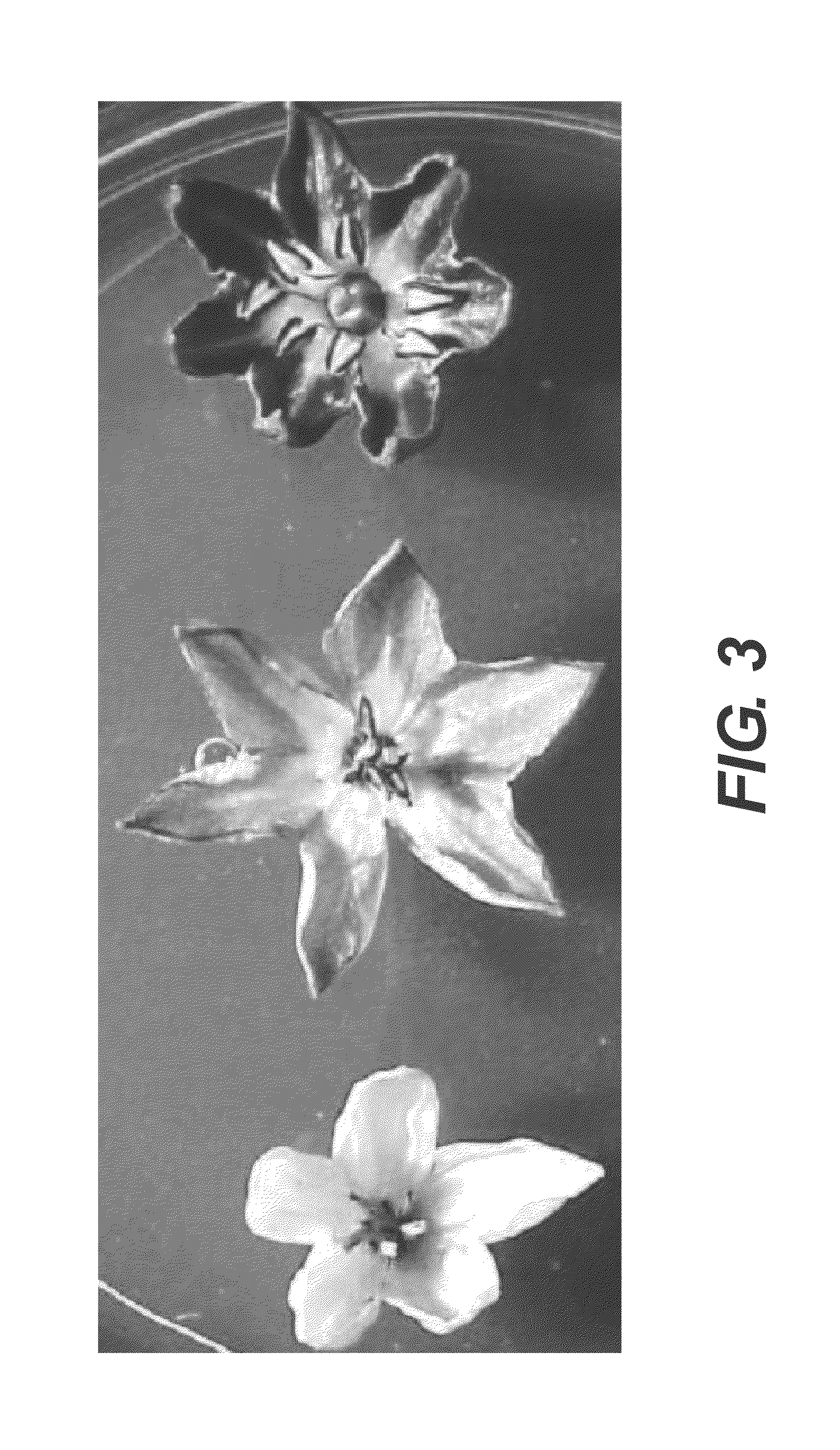Hybrid pepper plants resulting from a cross between C. annuum and C. pubescens
a technology of hybrid pepper plants and c. annuum, which is applied in the field of hybrid pepper plants resulting from a cross between c. annuum and c. pubescens, can solve the problems of limited ability to obtain viable and fertile plants capable of further breeding, prone to a variety of diseases, and /i> , to achieve the effect of improving the ability to prepare crosses, improving the ability to introgress traits into capsicum species, and improving the ability to improv
- Summary
- Abstract
- Description
- Claims
- Application Information
AI Technical Summary
Benefits of technology
Problems solved by technology
Method used
Image
Examples
example 1
Direct Crossing of C. annuum and C. pubescens
example 1a
Direct Crossing of C. annuum and C. pubescens using Emasculated Flowers of a Capsicum annuum plant as the Female Parent
[0325]Interspecific hybrids of Capsicum annuum and Capsicum pubescens are obtained by in vivo pollination supported by embryo culture of the hybrid plants.
[0326]In order to produce the hybrids, flowers of a C. annuum parent plant are emasculated in early morning before anthers shed. The flowers are then pollinated with pollen of C. pubescens around 10 AM. One day post-pollination, the flowers are treated with naphthal acetic acid (NAA) by immersing the pollinated flowers in 200 mg / l solution of NAA in water. After the NAA solution has dried, the flowers are subjected to a second pollination with the pollen remaining from that applied the previous day.
[0327]A large number of such interspecific crosses produce small fruit that yield some seeds having underdeveloped embryos. When ripe, fruits that develop from the pollinated flowers are harvested and seed extraction an...
example 1b
Direct Crossing of C. annuum and C. pubescens using Flowers of a Capsicum annuum Plant Cultured In Vitro as the Female Parent
[0328]Interspecific hybrids of Capsicum annuum and Capsicum pubescens are obtained by in vitro propagation of flower tissue, in vitro pollination, and embryo culture of the hybrid plants.
[0329]In order to produce the hybrids, flower buds of the C. annuum parent are collected and sterilized with 3% H2O2 for 25 min, then rinsed with sterile water. The sterilized flower buds are plated onto MS media containing 0.05 mg / l of NAA, 0.2 mg / l of 6-benzylaminopurine (BAP), 3% sucrose, and 6.5 g / l of Phytagar, with a final pH of 5.7, and kept under continuous light overnight under a laminar flow hood. Each plate is covered with a lid without sealing. For pollination, fresh flowers of C. pubescens are collected in the early morning prior to flower opening and plated onto MS medium. Later in the day, when pollen of the male parent is shed, a whole anther is removed and use...
PUM
 Login to View More
Login to View More Abstract
Description
Claims
Application Information
 Login to View More
Login to View More - R&D
- Intellectual Property
- Life Sciences
- Materials
- Tech Scout
- Unparalleled Data Quality
- Higher Quality Content
- 60% Fewer Hallucinations
Browse by: Latest US Patents, China's latest patents, Technical Efficacy Thesaurus, Application Domain, Technology Topic, Popular Technical Reports.
© 2025 PatSnap. All rights reserved.Legal|Privacy policy|Modern Slavery Act Transparency Statement|Sitemap|About US| Contact US: help@patsnap.com



